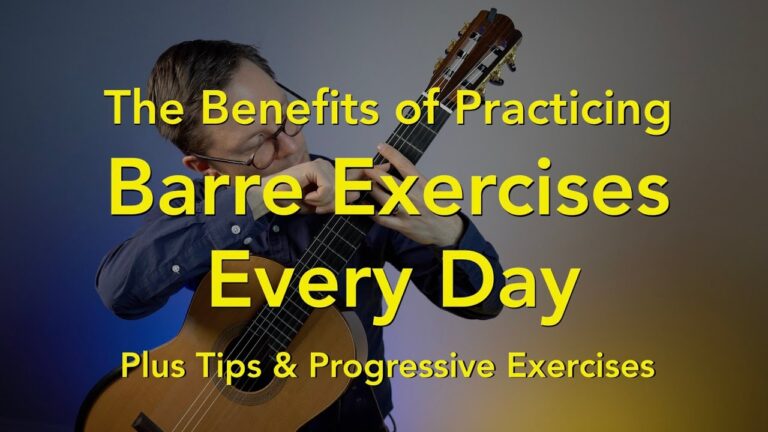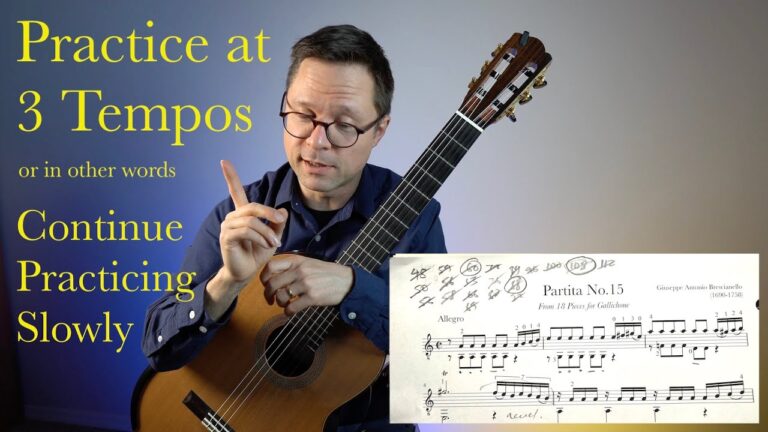Etude No.1, Op.60 by Matteo Carcassi (1796-1853) with performance, lesson, and sheet music. This comes from my edition of 25 Etudes, Op.60 by Matteo Carcassi. PDF or hardcopy sheet music for classical guitar. Comes with both a notation edition with left hand fingering and a separate tab edition in the same pdf. Intermediate to Early-Advanced (Grade 5-9). 142 Pages. Here is the YouTube link if you want to watch it there.
Etude No.1 is at a minimum technique level of around Grade 5-7 depending on your desired tempo and level of musical refinement. It is an excellent introduction to the collection giving the student a change to present melodic scale passages with voice exchange, arpeggios, muting, and shifts.
The twenty-five etudes in Op.60 by Matteo Carcassi (1796-1853) are one of the most important pedagogical collections for classical guitar. The etudes are both enjoyable for their musical content and pedagogically beneficial for their very clear technical objectives. Compared to other etude collections, both period and modern, Op.60 excels in its tightly focused compositional adherence to didactic goals. For this reason the etudes are excellent studies for students to test their skills in a controlled musical setting and a rite of passage from the intermediate to upper playing level.
This video was performed on a Douglass Scott classical guitar with Aquila Cristallo strings and an ErgoPlay Troster guitar support. All my gear here.





Maestro Werner,
Thanks for this detailed and well thought out lesson. I purchased your 25 Carcassi etudes book and was frustrated with the difficulty of this piece. I’m glad you clarified that this is an “introduction by fire” to these etudes.
Yes, the first etude is not the easiest in the collection but at the same time maybe it’s a good thing to set the educational mood. It also highly depends on where a student’s strengths are in terms of technique. Each etude might present different difficulties to different students.
All music needs to be expressed in some way, even if they are Studies, so if you feel like slowing down at certain points, especially with endings.
SO GO FOR IT.
Thank you for this. Excellent performance.
Another useful (?) tip regarding this study… don’t stop counting in the last three bars! The final chords must be at tempo.
Thanks for the comment. Why “must” it be at tempo? Though I agree that that is one legit interpretation for sure.
Brad, my instructor gave this to me probably before I was ready, but playing at a slower tempo helped me work my way through it. He insisted that the majority of the scale work and in fact most of the piece should be done with rest stroke. It certainly made it a great deal more challenging. Any thoughts
Practicing with rest stroke can be very valuable. I generally use free stroke in performance but rest stroke can be useful on many fronts in practice and performance. So, good results can come from both. It more comes down to why you are using rest stroke and what are you looking to get out of it.
My guitar teacher introduced me to Carcassi with a badly printed and difficult to follow edition. The music was undeniably beautiful and I could see the pedagogical and musical benefit of working my way through each piece, but somehow I lost motivation along the way. I’m so glad to this title added to your collection and think that your clarity of explanation and presentation should help boost my motivation to make a second attempt at this ‘rite of passage’.
OOOH Yah, very happy to dig into these very lovely (challenging) works. Thank you for this wonderful opportunity. PS, for those who are worried that there is only one lesson up so far….well it is going to take a while to master IMO.
Yes indeed! I also think that releasing the videos gradually will encourage people to actually hear each etude and consider it. If I release them all at once it’s hours and hours of video. But ya, great collection and a right of passage from intermediate to upper levels. Very excited to be releasing them (I already have the first 6 recorded).